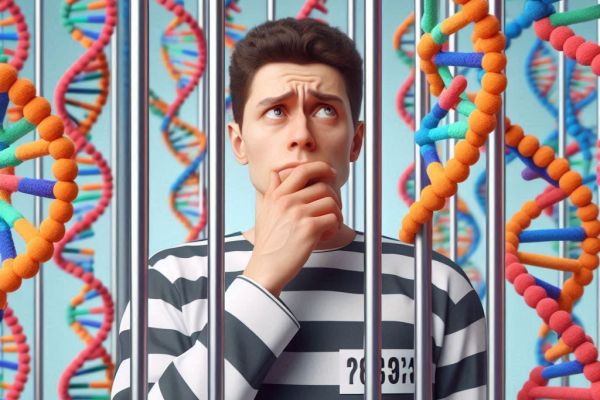The Lives and Relationships of Twins
At the core of many people’s fascination with twins is the belief that, at least in the case of identicals, their minds are as similar as are their bodies. There is both truth and conjecture in this line of thinking. Twins do make similar life choices and evince similar quirks due to the genetics of complex traits; genes contribute to everything from food preferences to choice of profession. However, there is no demonstrable evidence that twins can communicate telepathically or sense events in each other’s lives.
On This Page

We have all heard preternatural stories about twins’ lives intersecting and interests overlapping, especially those separated at birth. One of the most famous sets of twins is The Jim Twins of Ohio, who were separated after birth. By coincidence, both boys had been named James by their respective adoptive parents. James Lewis and James Springer found each other in 1979 at age 39, after Lewis went looking for his adoption records through probate court.
The Jim twins had the same height and weight, which is common. But they also had a number of similar quirks and life choices, as recorded by the Minnesota Center for Twin and Family Research. One named his first son James Alan, the other named his first son James Allan. Both worked in law enforcement as deputy sheriffs. Their cars were the same make and model. Both married women named Linda, divorced, and later married women named Betty. Both Jims have dogs named “Toy.” Jim and Jim also vacation along the same beach in Florida. They each developed tension headaches at age 18, and each gained 10 pounds at the same time.
Twins are born married. They share a primary attachment that is irreplaceable and forms a lifelong attachment and bond as well as an indelible identity. Sharing their in utero life is the beginning of their nonverbal communication and their need for closeness. And comfort can be found in physical proximity, where a sense of oneness is maintained and often endures throughout their lifespans.
Many identical twins do show an ability to read each other’s minds. They have been found to independently choose the same outfit, answer test questions exactly the same way, and finish each other’s sentences. But there is a better way to explain these choices and connections: their shared genes predispose them to have the same interests and be drawn to the same people, places, and events.
Identical twins seem to have a telepathic bond, but there's no evidence that such a connection exists. Their similarities reveal something about the likeness of their minds, not a link between them. Twin pairs often independently read the same books or enjoy the same hobbies and clothing styles, they are reflecting their matched abilities, tastes, and temperaments, according to researcher Nancy Segal.
There are many reports of twins feeling the death of their co-twin. Ross and Norris McWhirter were identical twins as well as founders of the Guinness World Records. In 1975 Ross McWhirter was shot and killed by suspected IRA terrorists. Later, Norris wrote of his twin's murder: "I felt that I was about to be reborn—not as half a person but as a double person."
The late doctor T. Berry Brazelton noted that a 3-month-old infant identical twin seemed disoriented when her sister was removed from their room. When she heard her sister’s voice, she stopped moving or feeding. Research shows that infants as young as six months of age show social interest in one another, but this can occur even earlier for twins.

It's not unheard of for siblings reared apart to become romantically involved as adults before realizing that they're related. Relatives who meet when they're adults aren't equipped with blockades. Research done on twins have found instances of fraternal twins, who were separated at birth, but met each other much later. According to researchers, more than anything, they are likely attracted to each other’s similarities.
Identical twins may say that they are not attracted to the same people. However, researcher Nancy Segal surmises that twins actually feel the same attractions, but as soon as one twin makes her interest known, the second twin will not pursue the other’s object of interest.
When identical twins deliver tests with similar answers, there may be suspicions of cheating among teachers. But research shows that identical twins think alike and process information alike. When twins are in the same classroom, seating them far apart might be a solution and avoid the appearance of collaboration.
Twins are more likely to aid one another during difficult and stressful times. Also, identical twins may be more in tune with each other, another benefit. An identical twin might be better at knowing when their twin needs support and how to provide it. Hence, the longevity benefits of having a twin.
People outside of the family tend to compare and contrast twins, sometimes giving them labels such as “smart twin” or “athletic twin.” These comparisons are insensitive. But no two twins are exactly alike, even among identicals. Twinship doesn’t have to detract either twin from individuality or a sense of self.
In later life, resentment and anger between twins from earlier life experiences come alive as if they had happened just yesterday. Adult coping strategies may well be ignored, only replaced with childhood behaviors. Of course, this is the case for non-twin siblings as well. However, conflict may be intensified in this case because the siblings are twins.














